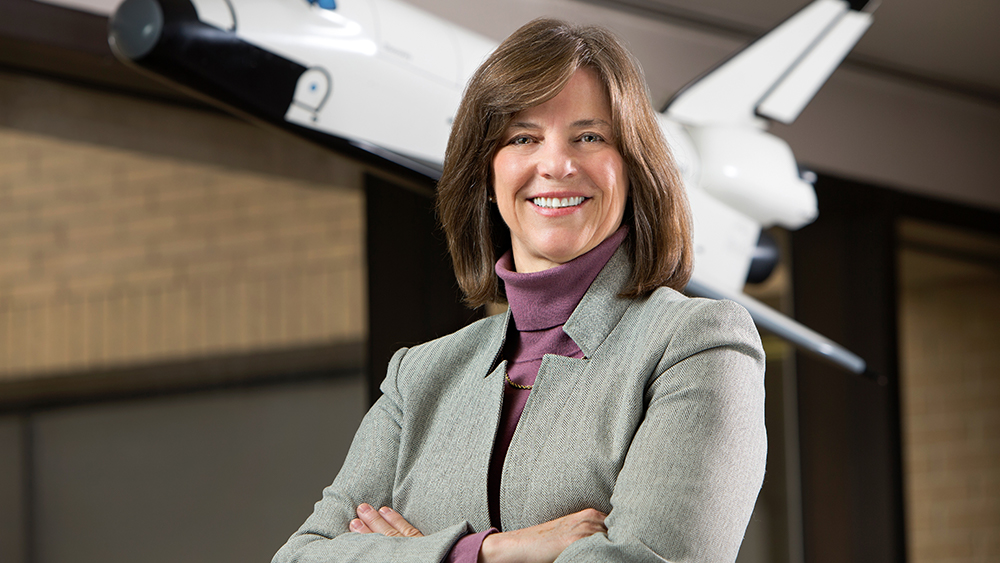
Dr. Bonnie J. Dunbar, TEES Eminent Professor in the Department of Aerospace Engineering at Texas A&M University, will be honored with the joint George R. Stibitz Computer & Communications Pioneer and the Edward O. Wilson Biodiversity Technology Pioneer awards by the American Computer & Robotics Museum.
The George R. Stibitz Computer & Communications Pioneer Award honors individuals who have made significant contributions to the fields of computing and communications. The Edward O. Wilson Biodiversity Technology Pioneer Award honors individuals who have made significant contributions to the preservation of biodiversity on Earth.
Dunbar, the director of the Texas A&M Engineering Experiment Station (TEES) Institute for Engineering Education and Innovation and the Aerospace Human Systems Laboratory, is being honored for her exemplary leadership, mentorship and promotion of STEM education. She will receive the award on Sept. 21 at Montana State University.
The American Computer & Robotics Museum is the world’s oldest continually operating museum dedicated to the history of computing and communication. Its exhibits and collections span over 5,000 years of history of computing and communications.
Dunbar, engineer, educator and retired NASA astronaut, is a member of the prestigious National Academy of Engineering. Prior to coming to Texas A&M, she was at the University of Houston where she provided leadership in the development of a new integrated university science, technology, engineering and mathematics (STEM) center. She was an M.D. Anderson Professor of Mechanical Engineering, and she developed a new innovative course for the introduction of engineering to freshmen students. She also directed the Sasakawa International Center for Space Architecture graduate program. She has devoted her life to furthering engineering, engineering education, and the pursuit of human space exploration.
Dunbar worked for The Rockwell International Space Division Company building Space Shuttle Columbia and worked for 27 years at NASA, first as a flight controller; then as a mission specialist astronaut where she flew five space shuttle flights logging more than 50 days in space, and then as a member of the Senior Executive Service. Her executive service included assistant NASA JSC director for university research; deputy director for Flight Crew Operations; and NASA headquarters deputy associate administrator for the Office of Life and Microgravity Sciences and Applications.
After retiring from NASA, Dunbar became president and CEO of The Museum of Flight in Seattle, where she established a new space gallery and expanded its K-12 STEM educational offerings. She has also consulted in aerospace and STEM education as the president of Dunbar International LLC and is an internationally known public speaker.
Dunbar holds bachelor’s and master’s degrees in ceramic engineering from the University of Washington, and a doctoral degree in mechanical/biomedical engineering from the University of Houston.
She is a fellow of the American Ceramic Society, the American Institute of Aeronautics and Astronautics, and the Royal Aeronautical Society. She has been awarded the NASA Space Flight Medal five times, the NASA Exceptional Leadership Medal and the NASA Distinguished Service Medal.
Dunbar was inducted into the Royal Society of Edinburgh, and in 2002 was elected to the U.S. National Academy of Engineering. In 2013 she was selected into the Astronaut Hall of Fame. She was elected president of the Association of Space Explorers in 2016.